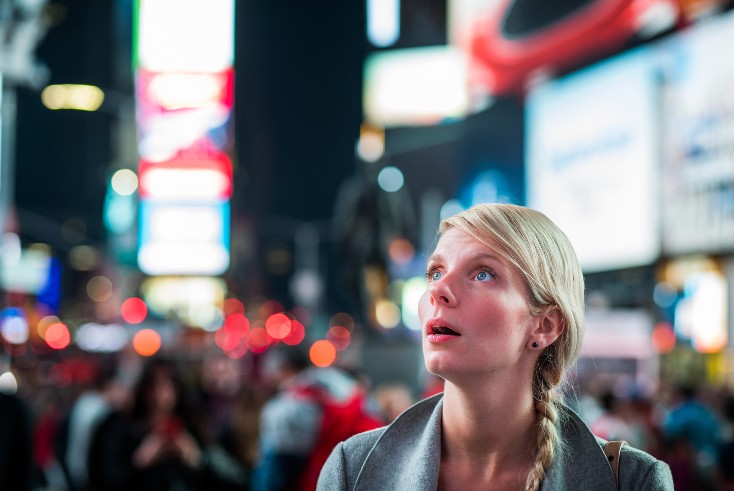The power of awe

Opinion: Strategy Leaders
Strategist Simon Carr thinks big and looks at how brands might deliver experiences that transcend the ordinary.
We are all driven by our passions, and among mine resides a deep affinity for rock climbing. When I find myself dwarfed by particularly grand and towering crags, there is a special exhilaration to be had — something that I can best describe as ‘awe’.
Yet curiously, I also experience ‘awe’ witnessing the growth and development of my children, or when listening to certain music, particularly if it is performed live.
But what is awe, exactly? And why can so many diverse experiences invoke it?
As marketers, understanding moods and emotions is part of the day job, and we certainly like to factor them into our strategies. But awe feels like a more distant, nebulous outlier; a sense of wonder that can only be triggered by perceiving things that are vast, mysterious, profound or powerful.
To make sense of things, in 2003 psychologists Dacher Keltner and Jonathan Haidt presented the first conceptual approach to awe, concluding that awe experiences can be characterised by two phenomena: “perceived vastness” and a “need for accommodation.”
We often experience “perceived vastness” when contemplating something physically large — like a mountain or the cosmos. Or, as Summer Allen, a research fellow with the Greater Good Science Center, writes in this paper, it can also come from a more “theoretical perceptual sense of vastness, such as being in the presence of someone with immense prestige or being presented with a complex idea like the theory of relativity.”
Meanwhile, the “need for accommodation” is the process of adapting our mental structures to make room for new information. It’s that feeling of the need to adjust our understanding of the world in order to accommodate something that is vast, profound or mysterious.
“Awe experiences are self-transcendent,” writes Allen. “They shift our attention away from ourselves, make us feel like we are part of something greater than ourselves.”
And this is particularly important because it can change how we think and behave.
Can awe enhance ad effectiveness?
The potential of awe in marketing could be significant, yet suggesting that marketers can merely “tap into it” would be an oversimplification. However — as explored in this Guardian article — awe is a multi-faceted emotion that can be experienced across a broad spectrum, which implies brands have ample opportunities to harness its power, so long as thoughtful effort goes into it.
I’d suggest beginning that process by considering a 2021 report from the Journal of Advertising Research, which supports the aforementioned idea that awe can lead to an abstract mindset, allowing us to focus on the bigger picture and the interconnectedness of ideas.
Crucially for marketers, however, it links this to persuasiveness.
The paper, which conducted five experimental studies, then reveals that awe has the power to enhance advertising effectiveness — but its persuasive power is most pronounced when the advertised product highlights its desirability features and is perceived as temporally distant.
The rationale behind these findings lies in the fact that awe encourages us to disassociate our thoughts from physical products, leaving space in our imaginations so we are more likely to perceive the product as desirable and valuable — even if it doesn’t immediately fulfil a pressing need.
Brand behaviour and awe
The idea that brands can create awe by guiding consumers toward extraordinary experiences and perspectives is tantalising. Certainly in my view, brands are uniquely positioned with the attributes and resources necessary to introduce innovative perspectives that allow us to view the world with fresh eyes. Moreover, brands can guide us towards experiences filled with awe by encouraging shifts in our behaviour and choices, ultimately leading us to those remarkable encounters.
Alternatively, brands can adopt a broader strategy, harnessing the common threads weaving through awe-inspiring phenomena. These might encompass the grandeur of nature, the perseverance of the human spirit, or the power of artistic, intellectual, and athletic achievements. By aligning with these universal themes, brands might evoke a sense of awe and resonance within their audience, transcending mere transactions and forging deeper connections.
Subjectivity and contrast
Another way to approach awe may be to understand how it can be created through contrast — accepting that different experiences will have very different effects depending on who we are.
For example, the Empire State Building may not create much sense of awe in someone who has spent a lifetime in New York, but it might for a tourist from the highlands of Scotland. And, of course, the opposite is true. By presenting someone with a stark contrast to their lived experiences, one can create a sense of awe — it just requires a deeper understanding of audiences.
Sharing the profound
Awe can be conceptual too, as conveyed through the sharing of profound knowledge. The theory of relativity, as Summer Allan notes, is awe-inspiring (in fact it’s mind blowing), as are the incredible pollinating strategies of Lord and Ladies plants (which is why Sir David Attenborough wanted to tell us about them). Yet, to trigger that sense of awe, there must be a conduit for sharing such knowledge. At times, we rely on others to illuminate the marvels of the world around us.
This is where brands who do their homework, or make the right partnerships, could find their purpose, serving as guides to the extraordinary — and leverage the aforementioned “need for accommodation” as we adapt our mental structures to make room for new information.
Media has the power to awe
Media can instil a sense of awe too. Platforms like IMAX, 3D deep screens (like those at Piccadilly Circus), and immersive experiences and surprising moments — such as Secret Cinema or pop-ups like Barbie’s Malibu DreamHouse on AirBnB — can all instil a sense of awe. Even smaller what-the-heck moments that TikTok and social thrive on feel like we’re teetering on the edge of bigger brand potential.
And for me, awe is all about opening up new potential; it’s becoming harder to create ads that create shared cultural moments in a world where people are so often looking down at small, personal screens. Yet we must always think big about strategies to increase engagement. By tapping into our emotions of wonder and amazement, perhaps we’d find that an easier task.
I began this column mentioning my love of music. Nick Cave — who has a special ability to invoke awe in me through his performances — has also written about it in his excellent Red Hand Files. Responding to a young fan worried about a world ridden with hate and disconnect, Cave was clear with his advice:
“Be a little vampire running around the place sucking up all the art and ideas you can. Fill yourself with the beautiful stuff of the world. Have fun. Get amazed. Get astonished. Get awed on a regular basis, so that getting awed is habitual and becomes a state of being… absorb into yourself the world’s full richness and goodness and fun and genius.”
Now that’s the kind of awe-inspiring call to arms I’m talking about.

Simon Carr is chief strategy officer at Hearts & Science



